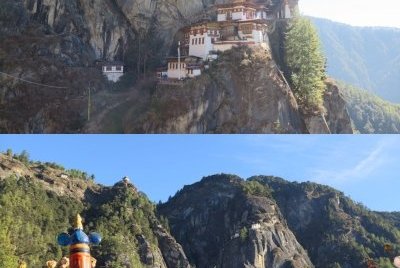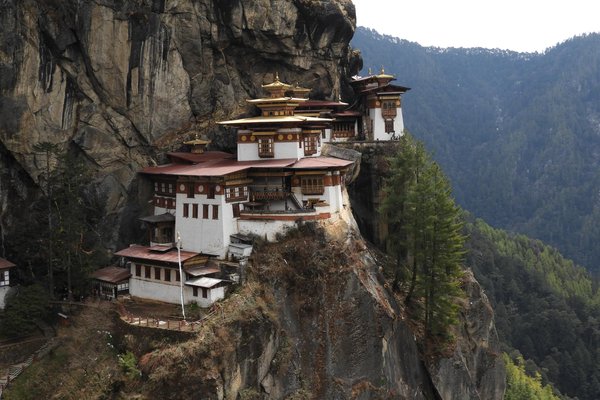Bhutan
Sacred Sites associated with Phajo Drugom Zhigpo
The Sacred Sites associated with Phajo Drugom Zhigpo comprises 16 fortresses, temples, caves and cliffs that play a role in the Drukpa-Kagyud Buddhist tradition. The most iconic of those is Taktshang a.k.a. Tiger’s Nest. The sites are of great historical and spiritual significance for the Bhutanese as they show one Buddhist school’s lineage since the Middle Ages.
Site Info
Official Information
- Full Name
- Sacred Sites associated with Phajo Drugom Zhigpo and his descendants (ID: 5696)
- Country
- Bhutan
- Status
-
On tentative list 2012
Site history
History of Sacred Sites associated with Phajo Drugom Zhigpo
- 2012: Added to Tentative List
- Added to tentative list
- Type
- Cultural
- Criteria
Links
- UNESCO
- whc.unesco.org
All Links
UNESCO.org
- whc.unesco.org — whc.unesco.org
Community Information
- Community Category
- Religious structure: Buddhist
Travel Information
Recent Connections
News
No news.
Recent Visitors
Visitors of Sacred Sites associated with Phajo Drugom Zhigpo
Community Reviews
Show full reviewsZoë Sheng
Sacred Sites associated with Phajo Drugom Zhigpo
Sacred Sites associated with Phajo Drugom Zhigpo (On tentative list)

No visit to Bhutan is complete without the Tiger's Nest, officially called Taktshang but trust me no-one will remember THAT name if you have already familiarized you with the B-movie Jason Stratham movie title soon coming to a streaming service everywhere. Conveniently placed near Paro, and I saw it from the plane heading to Paro Airport already, this is surprisingly "only" a half-day trip. Getting up early helps to avoid the mid-day heat even in November plus the horse rides that are popular with Indian tourists. The ascent takes roughly 3h with a tea break at the only guest house on the way to the top, providing your first real opportunity at photos. The sun is unfortunately rising beyond the temples and the sun glares right into the camera. The sandy path is not easy. Another hour and you can reach the steps, more viewpoints, then you are in the shade and it is suddenly cold.
When you reach the temples, Tiger's Nest is actually just ONE of the seven here, you have to drop off your camera and phone, shoes are only allowed for the central areas but not inside the actual temples. It was surprisingly empty inside. The Tiger's Nest, as mentioned, is actually a cave temple and the guide did not take me inside. It doesn't seem the highlight of the complex and involves more the story of transforming into a tiger and this lair is nothing to look at from the inside, but honestly none …
Keep reading 0 commentsSolivagant
Sacred Sites associated with Phajo Drugom Zhigpo
Sacred Sites associated with Phajo Drugom Zhigpo (On tentative list)

The UNESCO introduction for this esoterically named T List site, lists 16 locations – with No 3 described simply as “Taktshang”. Nothing else is stated about it but, “hidden” here, is Bhutan’s most iconic site – The Tiger’s Lair Monastery!
It would seem unlikely that anyone would visit Bhutan and not see it. Our first view was out of the left hand window of our Drukair flight from Kathmandu to Paro back in autumn 2001. The flight along the main Himalayan cordillera and then down into Bhutan’s only international airport is an “experience” and the final descent runs alongside the mountain face into which this monastery is built. You may not actually be quite at “window level” but it is still a great view!
To actually reach the monastery requires a climb of a couple of hours up a well worn track which starts a few kms outside the town of Paro. The monastery had suffered a major fire in April 1998 and wasn’t open when we were there – but it did seem to have already received a significant amount of rebuilding, at least to the exterior and no result of the fire was visible to us from the outside. A good view of it is available at the summit of the climb which is actually a bit higher than the monastery across a gorge. The track then takes a downward direction and later crosses the gorge to climb again to the Monastery – about as far again as …
Keep reading 0 comments
